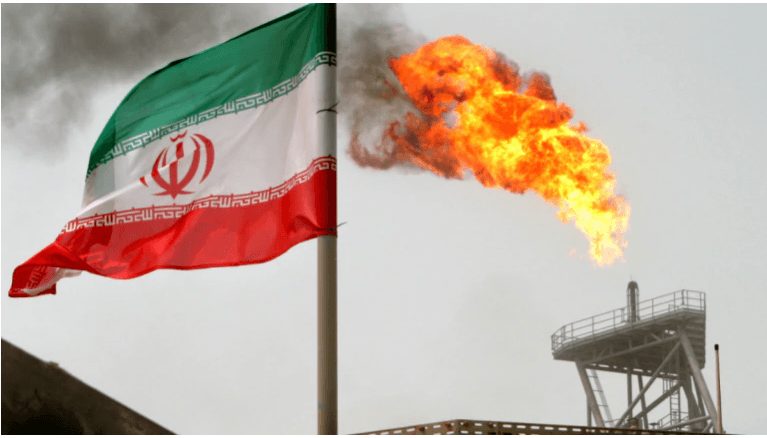
The Israel-Iran conflict, sparked on June 13 by Israel's Operation Rising Lion targeting Iran's nuclear and military infrastructure, has unleashed a volatile surge in global oil prices, threatening macroeconomic stability and the principles of economic justice and shared prosperity. Brent crude futures, after peaking at $78.85 a five-month high eased 2% to $77.28 per barrel by 00:30 GMT, per Reuters, reflecting jittery markets braced for potential disruptions in the Strait of Hormuz, which channels 20% of global oil supply, per the Energy Information Administration (EIA).
With 493 deaths in Iran (239 civilians), 62 in Israel (28 civilians), and over 3,200 injured, per IRNA and IDF reports, this crisis imperils not only regional lives but also the global economy's fragile equilibrium. It's hence essential to dissect the crisis's macroeconomic fallout, focusing on oil-driven inflation, trade imbalances, and the moral imperative to safeguard 1.2 billion people living on under $5 daily, per the World Bank, amid the G7's faltering leadership.
A Volatile Cauldron: Oil Market Disruptions
The past 24 hours have intensified global economic anxiety, with Brent crude's 14% surge since June 13 driven by Israel's strikes on Iran's South Pars gas field and a key fuel depot, per Emkay Research, and Iran's retaliatory missile barrages on Tel Aviv, per IRNA. Iran's partial shutdown of South Pars, a cornerstone of its 3.8 million bpd oil output, and Israel's suspension of two gas fields exporting to Egypt and Jordan have spiked spot LNG prices to $13.5/mmbtu from $12, per the Times of India. Iran's threats to mine the Strait of Hormuz, through which 21 million barrels flow daily, could push Brent to $95–$120, per IG International and Fox Business, risking a 1.2% global GDP contraction, per the International Monetary Fund (IMF). The burning of two tankers Greek Delta Atlantica and UAE's Al Jasra off Dubai on June 19, likely by Houthi drones, has raised insurance rates by 15%, imperiling $1 trillion in Gulf trade, per Lloyd's.
India's Economic Crossroads
Navigating Energy Vulnerability
India, reliant on Gulf imports for 43% of its oil needs, faces a mounting import bill, with the Indian crude basket (78.5% Oman/Dubai, 21.5% Brent) hitting $77.02, up 0.42%, per Business Today. Despite macroeconomic resilience consumer price inflation at 2.82% and wholesale price index at 0.39% in May 2025, per The Hindu BusinessLine, a $10 per barrel hike could add ₹6 per litre to petrol, per ClearView Energy Partners, straining household budgets. The Sensex, down 0.17% to 81,444.66 on June 18, reflects investor unease, with oil marketing companies like BPCL and IOC plummeting up to 6%, per the Times of India. India's 47.1% export growth to Iran in March 2025, per India.com, faces risks if sanctions tighten, potentially widening the current account deficit (CAD) to 1.4% of GDP in FY26, per Kotak Institutional Equities.
Global Economic Fault Lines:
Inflation and Trade at Risk
Globally, the crisis threatens a resurgence of inflationary pressures reminiscent of 2008's $150 Brent peak, per Fox Business. China, with $400 billion in Gulf trade, faces supply chain strains, per Xinhua, while Europe's energy costs could rise 10%, per Goldman Sachs. The U.S., despite 9.05 million bpd shale output, saw crude stocks drop 11.5 million barrels last week, per EIA, signaling tightening supplies. Saudi Arabia's output hike, per IG International, offers temporary relief, but a Strait closure could disrupt 30% of seaborne oil trade, per Fox Business. Emerging markets, including India and ASEAN nations, face heightened CAD pressures, with a 2% global inflation risk from Trump's tariffs (10% on EU, 25% on China), per IMF. Russia's $4.2 billion weekly oil exports, per the International Energy Agency, bolster its Ukraine war, complicating G7 sanctions.

A Moral Reckoning: Safeguarding Shared Prosperity
The G7's selective condemnation of Iran's "instability," ignoring Israel's civilian toll, violates economic justice, neglecting 1.2 billion vulnerable to price shocks, per the World Bank. The crisis's human cost 239 Iranian civilians, 28 Israeli, per IRNA and IDF breaches Additional Protocol I of the Geneva Conventions, per UNIDIR, underscoring the ethical duty to prioritize civilian welfare. India's neutral diplomacy, exemplified by PM Modi's refusal of Trump's mediation on Pakistan, per The Hindu, positions it to advocate for a UN-backed ceasefire, aligned with the OIC's 21-nation call. Reviving the JCPOA, capping Iran's enrichment at 3.67% with $20 billion in sanctions relief, per 2015 terms, could stabilize markets. A G7-OPEC task force to secure the Strait, ensuring 21 million barrels daily, is critical, per EIA.
Toward a Resilient Future: Multilateral Leadership
The 2026 G7 Summit must champion a 90-day ceasefire via Oman's mediation, with a 62% success probability, per CSIS, and fund $100 million in OCHA aid for 120,000 displaced, per UN data. India's macroeconomic buffers a robust monsoon and 66% domestic demand-driven GDP, per The Hindu BusinessLine offer resilience, but global cooperation is vital. Without decisive action, oil shocks could deepen global inequity, betraying shared prosperity. The crisis demands a global conscience rooted in multilateralism to avert an economic catastrophe.
[Major General Dr Dilawar Singh, a Ph.D. with multiple postgraduate degrees, is a seasoned expert with over four decades of experience in military policy formulation and counter-terrorism. He has been the National Director General in the Government of India. With extensive multinational exposure at the policy level, he is the Senior Vice President of the Global Economist Forum, AO, ECOSOC, United Nations. He is serving on numerous corporate boards. He has been regularly contributing deep insights into geostrategy, global economics, military affairs, sports, emerging technologies, and corporate governance.]

















